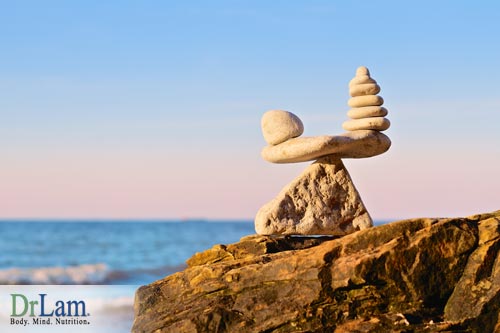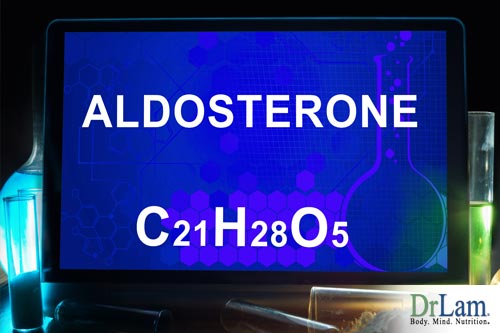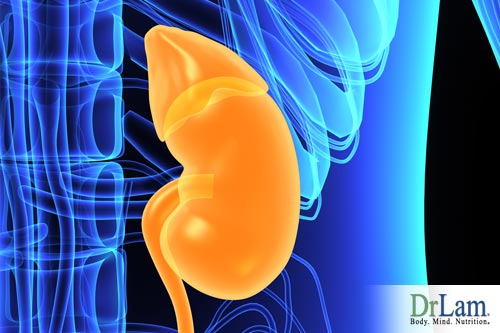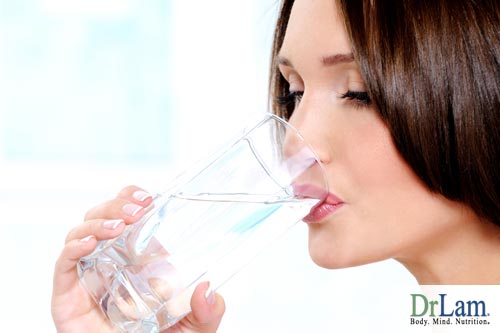 Homeostasis refers to the stability of a system. Homeostatic regulation, then, is an attempt by the body to maintain constant internal conditions. Homeostatic regulation requires three parts. These are the receptor, the control center, and the effector.
Homeostasis refers to the stability of a system. Homeostatic regulation, then, is an attempt by the body to maintain constant internal conditions. Homeostatic regulation requires three parts. These are the receptor, the control center, and the effector.
The receptor detects a change in the environment. The receptor sends this information to the control center. The control center responds by triggering the effector to oppose or enhance stimulus as needed to maintain balance. For example, temperature receptors in the skin communicate information regarding ambient temperature to the brain, or control center, which stimulates the blood vessels to expand or contract and/or sweat glands to secrete sweat as needed to keep the core body temperature stable.
Homeostatic regulation is a continuous process involving a series of negative feedback loops. A negative feedback loop is a reaction in which the system responds to reverse the direction of change and keep conditions constant. This can be compared to a home thermostat. A receptor detects when the temperature rises above or falls below a certain range and triggers the furnace or air conditioner to turn on or off to return the temperature to the normal range.
In a positive feedback loop, the response serves to amplify a change, producing a destabilizing effect, the opposite of homeostatic regulation. Some examples of positive feedback loops include blood clotting, and the flood of oxytocin that occurs during childbirth. Positive feedback is also seen in cases of high fever when metabolic changes push fever higher.
One of the most critical components of homeostatic regulation involves the balance between fluid and electrolytes in the body. Electrolytes play an especially critical role in maintaining homeostasis, regulating myocardial and neurological function, balance of fluids within the cells, oxygen levels, pH balance, and many other biological functions. Cells, especially those found in the nerves, heart, and muscle, use electrolytes to maintain electric current across cell membranes and carry impulses to other cells.
Electrolyte imbalances can occur in four ways. These are excessive ingestion, diminished ingestion, excessive elimination, and diminished elimination. The most common cause of imbalance is renal failure, and the most serious disturbances involve abnormal levels of sodium, potassium, or calcium. Other causes of electrolyte imbalance include overuse of laxatives, diarrhea, and vomiting.
Maintaining electrolyte balance is the responsibility of the kidneys. During heavy physical exercise, or in very hot conditions, you may lose electrolytes, particularly potassium and sodium, through sweat. It is necessary during these times to replace electrolytes to keep concentrations constant.
We typically think of dehydration strictly in terms of water loss, or hypertonic dehydration. However, there are two other kinds of dehydration that can occur, specifically hypotonic, or loss of electrolytes, and isotonic, or equal loss of water and electrolytes. In most cases, dehydration is of the isotonic variety, as the human body typically loses water and electrolytes in roughly equal proportions to stay as close as possible to homeostatic regulation.
The distinct types are important when it comes to correcting dehydration. In cases of hypotonic dehydration, for example, replacing electrolytes is far more critical than just replacing fluid. In this case, just replacing fluid without replacing electrolytes can cause very serious complications.
 The hormone responsible for homeostatic regulation of the balance of salt in the body is aldosterone. This hormone is produced by the adrenal cortex and maintains strict concentrations of sodium and potassium inside and outside the cells. Regulation of these electrolytes directly influences the amount of fluid in the body and the blood pressure. It is important to be aware that sodium and water go together; water follows where sodium goes. As levels of aldosterone increase, levels of sodium and water in the body also rise, increasing fluid retention and blood pressure. As levels of the hormone decrease, sodium and water also decrease and blood pressure goes down. Sodium restricted diets decrease this action, while sodium loading increases it.
The hormone responsible for homeostatic regulation of the balance of salt in the body is aldosterone. This hormone is produced by the adrenal cortex and maintains strict concentrations of sodium and potassium inside and outside the cells. Regulation of these electrolytes directly influences the amount of fluid in the body and the blood pressure. It is important to be aware that sodium and water go together; water follows where sodium goes. As levels of aldosterone increase, levels of sodium and water in the body also rise, increasing fluid retention and blood pressure. As levels of the hormone decrease, sodium and water also decrease and blood pressure goes down. Sodium restricted diets decrease this action, while sodium loading increases it.
Unlike other homeostatic regulation systems in the body, aldosterone does not have a negative feedback loop to control excess amounts. When aldosterone levels get too high, receptor sites are down regulated and sensitivity to the hormone is reduced.
In the early stages of adrenal fatigue, levels of cortisol and aldosterone increase due to the stimulatory effects of stress. As a result, both sodium and water are retained, causing feelings of bloating. Receptors that monitor the pressure of blood in the vessels are triggered, causing the blood vessels to relax to help maintain stable blood pressure, at a time when fluid volume is increasing.
In stressful conditions, the adrenal glands also secrete epinephrine, a hormone that constricts blood vessels and raises blood pressure, delivering extra-oxygenated blood-flow to the brain to deal with threats. Relative levels of aldosterone, cortisol, norepinephrine, acetylcholine, and epinephrine together regulate blood pressure at any given time.
The whole idea of sodium as a villain in high blood pressure is based on hydrophilic, or water-loving, properties of sodium. The theory goes that excessive sodium causes water retention, increasing blood pressure. The study used to justify low sodium intake diets involved lab rats fed the equivalent of more than 80 times normal salt intake, far more than even someone consuming an unusually high amount of sodium diet would eat.
In many cases of hypertension, blood pressure is merely a symptom of chronic dehydration, and has nothing to do with excessive salt intake. As dehydration sets in, vascular pressure falls due to insufficient fluid. The body attempts to compensate by secreting hormones to constrict the blood vessels. When hydration levels rise, the signal is turned off and blood pressure, in most cases, should return to normal.
Studies conducted in the early 1980s found sodium to be harmless, and calcium, magnesium, and potassium to effectively protect against hypertension, helping to maintain homeostatic regulation of blood pressure. Another study conducted in 1997 found that subjects that consumed diets low in calcium had significantly higher blood pressure readings then a control group given a diet with normal amounts of calcium.
Not only has sodium proved to be harmless, but severely restricted sodium intake can lead to decreased blood volume, abnormally low blood pressure, constipation, pH imbalances, lethargy, and even coma. Low blood pressure combined with fatigue can often be eased by reintroducing salt.
 Adrenal fatigue is a common cause of sodium deficiency. The adrenal glands are a vital part of the NeuroEndoMetabolic (NEM) Stress Response, and as such, are critical to maintaining homeostatic regulation so the body can continue to function optimally. When too much stress occurs over a long period of time, the adrenal glands become unable to do their part in maintaining homeostatic regulation effectively. This state of low adrenal function is very common, but early-stage symptoms are so easy to miss that many people do not realize they are on the verge of having a problem.
Adrenal fatigue is a common cause of sodium deficiency. The adrenal glands are a vital part of the NeuroEndoMetabolic (NEM) Stress Response, and as such, are critical to maintaining homeostatic regulation so the body can continue to function optimally. When too much stress occurs over a long period of time, the adrenal glands become unable to do their part in maintaining homeostatic regulation effectively. This state of low adrenal function is very common, but early-stage symptoms are so easy to miss that many people do not realize they are on the verge of having a problem.
Aldosterone, the vital hormone secreted by the adrenal glands to regulate fluid balance, works primarily by controlling the amount of sodium filtered by the kidneys to influence urination. When the adrenal glands are functioning as they should, aldosterone is produced in the right amounts to maintain balance of sodium and fluid in the body. However, high levels of stress can interfere with the ability of the adrenal glands to produce the amounts of the hormone needed for homeostatic regulation. Stress can lead to adrenal gland fatigue, which interferes with homeostatic regulation.
There are several things that you can do to help your body maintain the homeostatic regulation of sodium and fluid levels in your body so that you do not become dehydrated.
Conventional wisdom says to drink lots of water, at least eight 8-ounce glasses every day. However, drinking too much water can dilute the sodium in your system and cause levels to decrease. Drinking too much water may also increase how much water you retain, and cause bloating.
A general rule of thumb is to drink between half an ounce and an ounce of water for every pound of bodyweight per day. If you weigh 150 pounds, you would drink between 75-150 ounces of water a day, depending on your climate and activity level. If you live in a cool climate and are primarily sedentary, you might limit your water intake to closer to the lower end of this range, but if you live in a hot climate and are physically active, you would want to drink an amount closer to the upper end the this range. While it is important to be sure you replace fluid lost through sweating during physical activity or in hot conditions, be careful not to drink more than a quart of water per hour, as this can overload your body and dilute sodium levels.
 Many people find it difficult to drink as much water as they need during the course of the day, or don't really know how much they are drinking. Try some of the following tips to help you stay hydrated all day long:
Many people find it difficult to drink as much water as they need during the course of the day, or don't really know how much they are drinking. Try some of the following tips to help you stay hydrated all day long:
Some experts recommend drinking around 30 to 50 ounces of fluid, approximately 4-6 8 ounce glasses of water per day. However, it is important to be aware that other fluids, including foods with a high water content, such as watermelon, soups, fruits and vegetables, count toward this requirement. Many vegetables, along with most meats, also contain plenty of sodium and other nutrients. Vegetable juice or a combination vegetable/fruit juice blend is a great way to get plenty of fluid and sodium at the same time.
If you are in a situation where you are sweating heavily and need to replace significant water loss, you should consider drinking a sport drink or homemade electrolyte drink to help replenish the sodium and potassium lost through sweat. These beverages can also help increase glycogen stores to provide extra energy to your muscles. When you make them yourself, you’ll be able to ensure the ingredients are all natural and fresh, with no unwanted artificial flavors, colors, or preservatives.
There are plenty of recipes for homemade electrolyte drinks. Most of them call for filtered water and/or coconut water, some fruit juice and raw honey for flavor, and a bit of sea salt. Some recipes also call for added trace minerals, which are usually available at any health food store.
Fever, vomiting, and diarrhea, can cause your body to lose additional fluids. If you are ill, it is important to drink more fluids, and you may want to consider an electrolyte solution such as Gatorade. People with kidney stones or urinary tract infection may need to increase water intake as well. However, some conditions including heart failure, kidney disease, liver disease, and adrenal imbalance can impair the ability to excrete water. In these cases you may need to limit your fluid intake. Your doctor will let you know how much water you can safely consume.
Women who are pregnant or breastfeeding need to increase their fluid intake significantly to support and nourish the growing baby.
